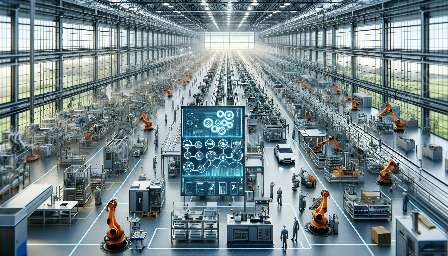Ergonomics is a vital aspect of facility layout and manufacturing, focusing on creating work environments that enhance both productivity and safety. In this comprehensive guide, we'll delve into the principles of ergonomics, how they are applied in facility layout and manufacturing, and the benefits they bring to organizations and their employees.
The Importance of Ergonomics
Ergonomics, often known as human factors engineering, is the study of how to design and organize the workspace to fit human requirements effectively. Its objective is to create a comfortable, efficient, and safe work environment by understanding the capabilities and limitations of the human body. By integrating ergonomics into facility layout and manufacturing processes, businesses can optimize performance, minimize the risk of injuries, and promote well-being among their workforce.
Ergonomics in Facility Layout
The layout of a facility plays a significant role in determining the ease of performing tasks, minimizing errors, and preventing workplace injuries. When applying ergonomics to facility layout, several key factors are considered:
- Workstation Design: Workstations should be designed to accommodate the physical dimensions and movement range of workers, minimizing repetitive motions and awkward postures.
- Equipment Placement: Placing tools and equipment within easy reach helps reduce excessive reaching, bending, and twisting, thereby enhancing efficiency and reducing strain on employees.
- Traffic Flow: Optimizing the flow of people and materials through the facility reduces congestion and potential accidents, leading to smoother operations.
- Lighting and Environmental Factors: Adequate lighting, proper ventilation, and control of noise levels contribute to a comfortable and safe working environment.
Ergonomics in Manufacturing
In the manufacturing sector, ergonomics is crucial for improving the design of workstations, tools, and equipment, as well as the layout of production lines. Key considerations for integrating ergonomics into manufacturing processes include:
- Tool and Equipment Design: Ergonomically designed tools and machinery can reduce the physical strain on workers, leading to more efficient and safer production processes.
- Workplace Safety: Ergonomics addresses potential hazards in manufacturing settings, such as repetitive motion injuries, lifting injuries, and musculoskeletal disorders, by implementing ergonomic solutions.
- Process Optimization: By analyzing workflow and streamlining processes, ergonomic improvements can enhance productivity and reduce the risk of errors or accidents.
- Training and Education: Educating employees about proper lifting techniques, posture, and ergonomics best practices can further promote a healthy and safe work environment.
The Benefits of Ergonomics
Implementing ergonomics in facility layout and manufacturing offers a wide range of benefits to both organizations and their employees:
- Improved Productivity: Ergonomically designed work environments can enhance efficiency and productivity by reducing fatigue and minimizing the risk of injuries.
- Enhanced Safety: Ergonomics helps in identifying and eliminating potential hazards, creating a safer workplace and reducing the likelihood of workplace accidents.
- Employee Well-Being: By promoting comfortable and healthy work conditions, ergonomics can contribute to employee satisfaction, morale, and retention.
- Cost Savings: A focus on ergonomics can lead to reduced healthcare costs, decreased absenteeism, and increased overall operational efficiency, resulting in significant cost savings for organizations.
- Regulatory Compliance: Adhering to ergonomic guidelines can ensure compliance with occupational health and safety standards, helping businesses avoid fines and legal issues.
Conclusion
Ergonomics plays a pivotal role in the design of facility layout and manufacturing processes, offering substantial advantages to both businesses and their workforce. By prioritizing ergonomics, organizations can create safer, more efficient, and healthier work environments, leading to improved productivity and employee satisfaction. Understanding the principles of ergonomics and integrating them into facility layout and manufacturing is essential for achieving sustainable success in today's competitive business landscape.


